Military Records
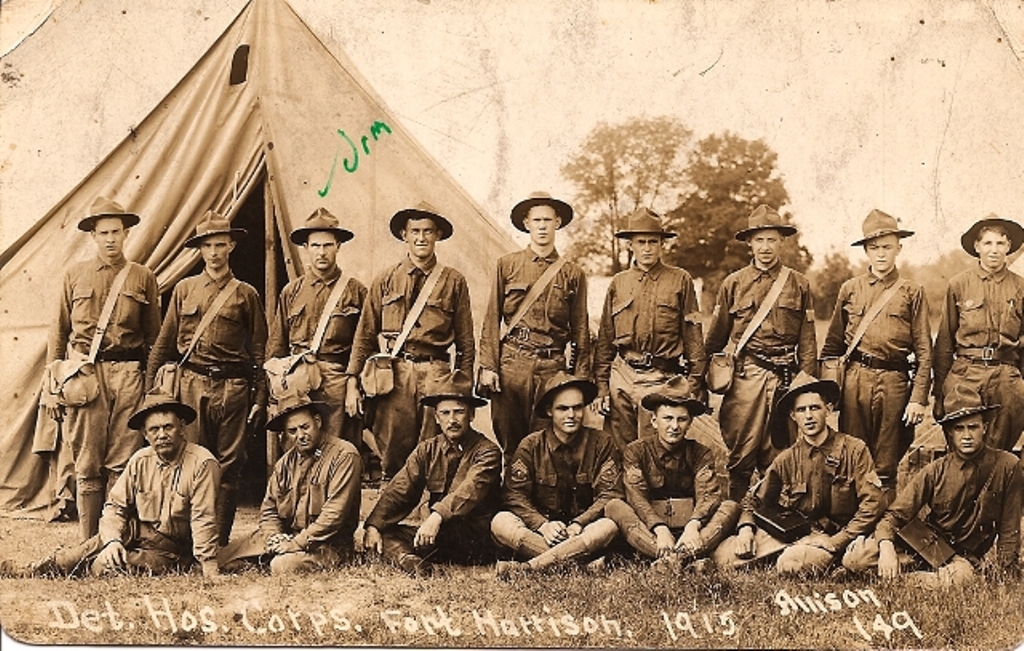
Early Militia | Mexican War | Spanish American War | Civil War | National Guard | World War I | World War II | Korean War | Vietnam War | Urgent Requests | DD214's 1979 to 1988
The Indiana State Archives holds records ranging from the territorial period up to 1988. More recent records often accessed to provide proof of service for benefits, loans, and military funerals. Earlier records are useful for genealogical purposes, and often include biographical details about the soldier. Many of these records have been indexed in the Research Indiana Index. Researchers can also find more general military history at the Archives, including correspondence files from the Adjutant General’s Office and Governor’s Office, financial records, and records from agencies such as the Indiana Defense Council.
Early Militia
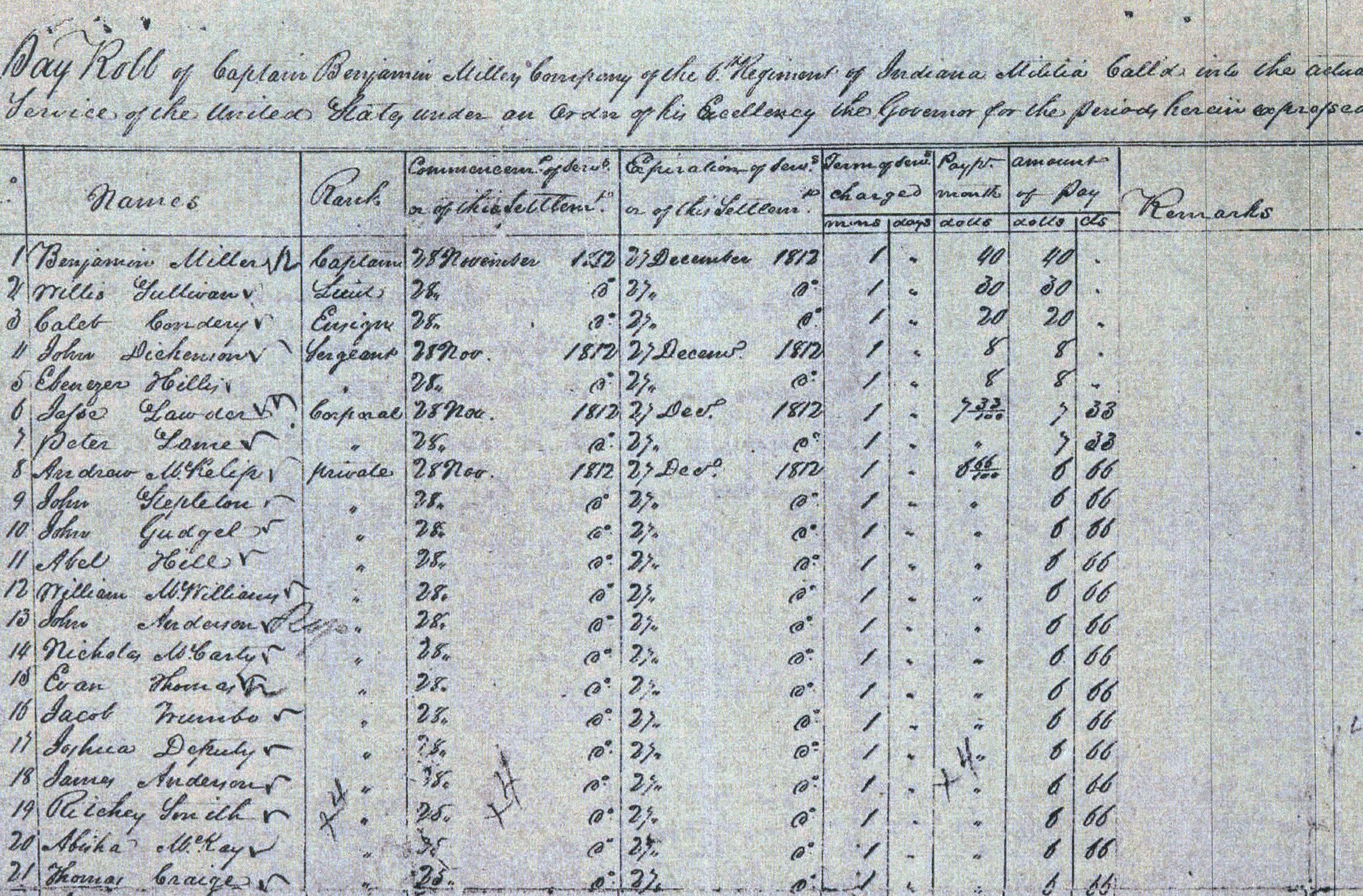
The Indiana National Guard can find its history in the early militia units as far back as 1801, fifteen years before statehood. The Indiana National Guard was first known as the Indiana Territorial Militia and then the Indiana State Militia, and was also known as the Indiana Rangers, Indiana Militia, and the Indiana Legion. Records belonging to these early organizations have been compiled into the Early Military Records Index. This index includes Hoosier soldiers who participated in the Battle of Tippecanoe, the War of 1812, and the Black Hawk War. Officers appointed to the Indiana State Militia during times of peace are also included.
Indiana Territorial Militia, 1811-1813
Taken from an early index and some of the muster rolls of the Battle of Tippecanoe and the War of 1812, the Indiana Territorial Militia index is available as a part of the Early Military Records Index. All information has been transcribed. Due to gaps in some records, not all soldiers, particularly privates and non-commissioned officers, may be listed. Digital images of the Indiana Muster, Pay, and Receipt Rolls, War of 1812, indexed by the Indiana State Library, are also available on the IUPUI Program of Digital Scholarship Webpage.
Indiana Militia, 1821 to 1851
This alphabetical index of commissioned officers gives names, rank, and unit. All information has been transcribed and is available in the Early Military Index.
Indiana Black Hawk War Militia Index, May to July 1832
This alphabetical card file includes name, rank, unit, term of enlistment and by whom enlisted. All information has been transcribed and is available in the Early Military Index.
Indiana Militia, 1877 to 1896
This index includes name, rank, unit and unit location, and may also include date of muster, age, occupation.
Mexican War
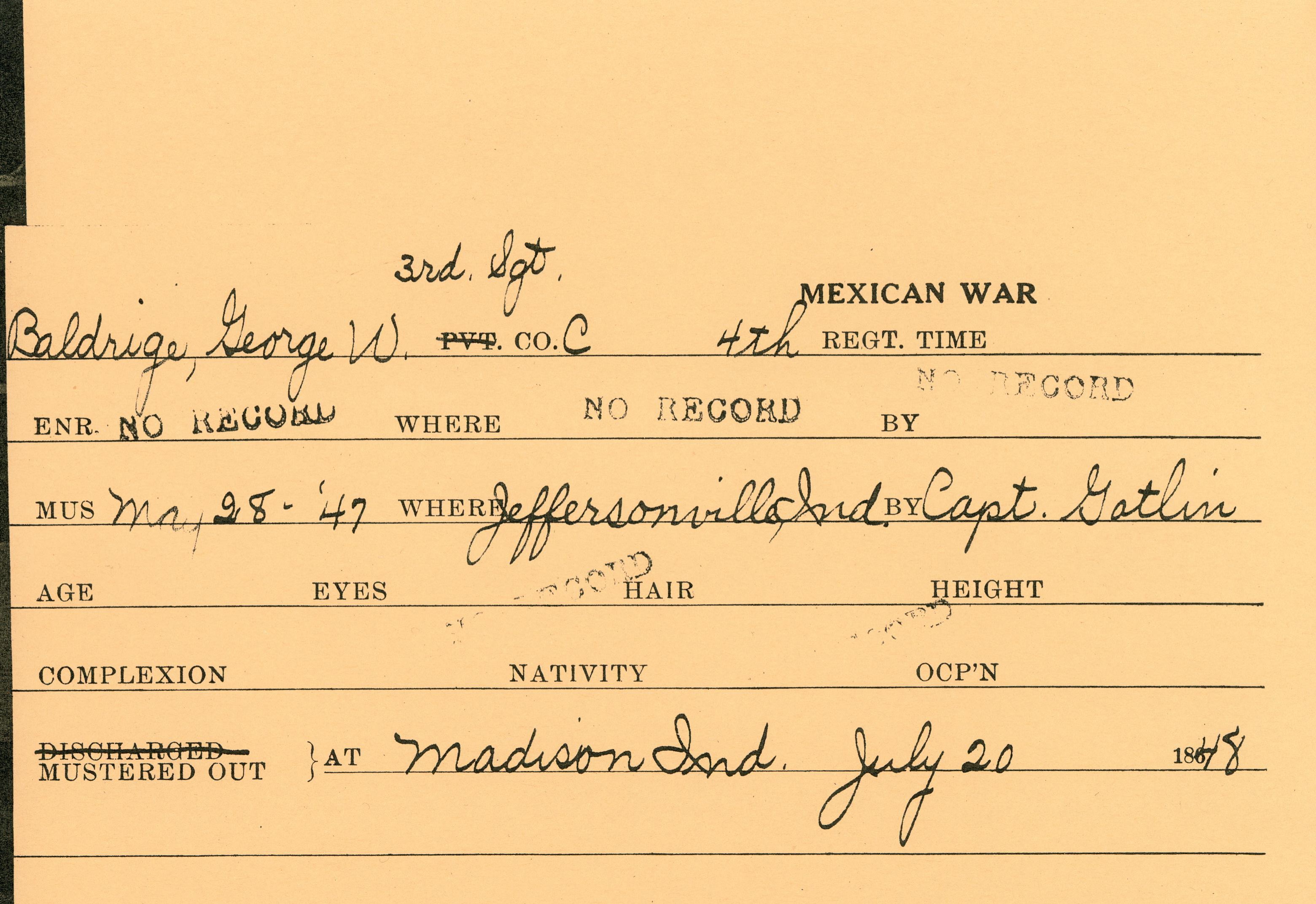
Indiana Mexican War Volunteer Index, 1846-1848
The names of the men who served in the five Indiana Volunteer Regiments have been indexed. Information given includes name, rank, muster in and muster out dates. All information has been transcribed.
Spanish-American War
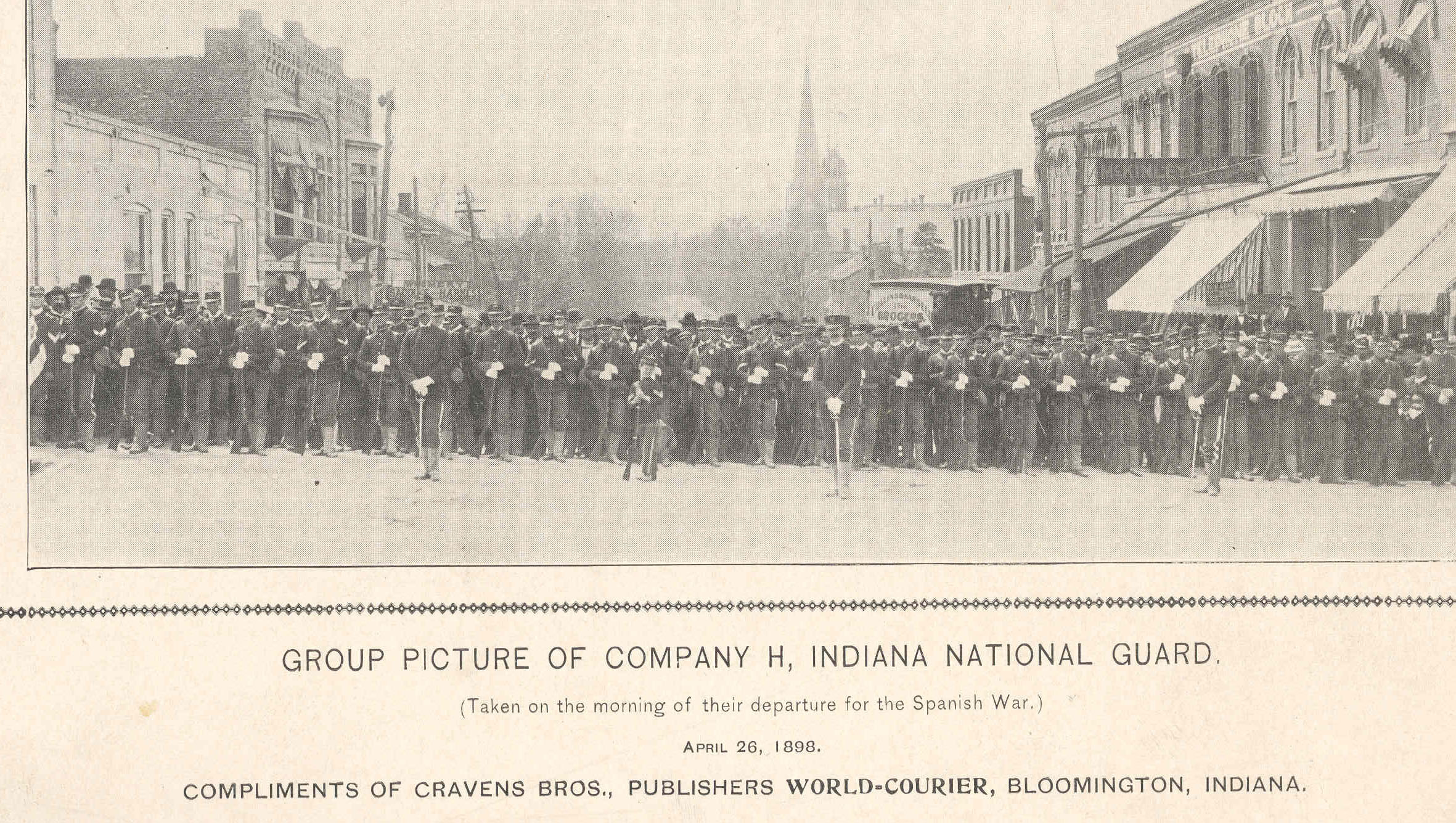
Indiana Spanish-American War Volunteers, 1898-1899
The Adjutant General's index to the muster rolls includes name, unit, rank, age, physical description, birthplace, occupation, and muster in and muster out dates, and will soon be searchable on the new Research Indiana Indexes. Researchers may also be interested in the National Guard Collection 1898-1940. Soldiers serving in Indiana regiments during the Spanish-American War would have done so through National Guard regiments. Though the Guard files for the Spanish-American War participants will typically only contain an enrollment card, if the soldier continued to re-enlist he might have more information in his file. Some of these men also served during the Philippine Insurrection and remained in the National Guard for many years.
United Spanish War Veterans
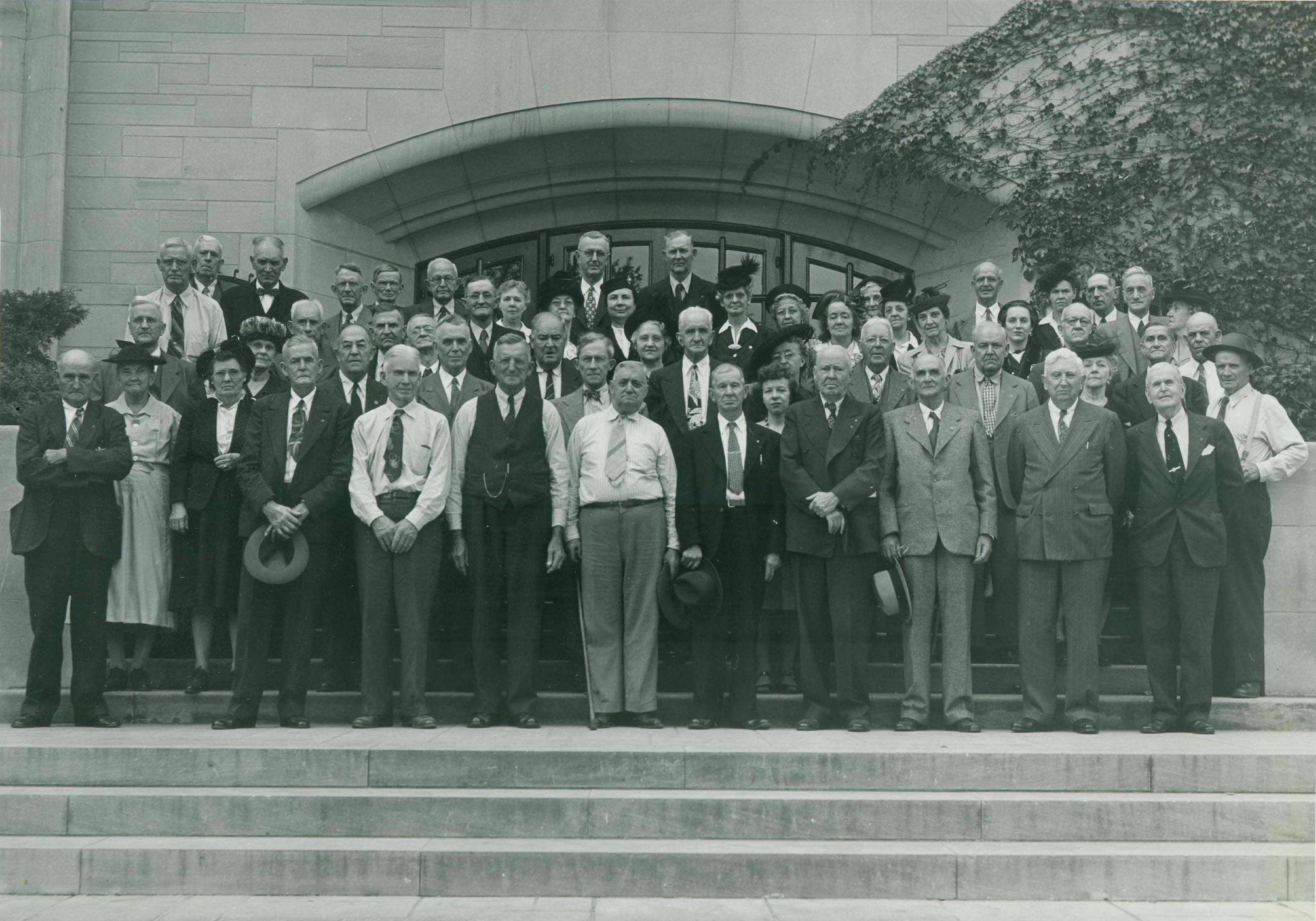
The United Spanish War Veterans group was created by a merger of three smaller groups of Spanish-American War veterans. The membership cards of the Indiana Department, United Spanish War Veterans, 1903-ca.1964 are available on microfilm in our reading room and have been indexed. The information given includes name, rank, unit, date and place of death. Additional material is available in the compiled files of the USWV, which may include correspondence, supporting pension material for the veteran and spouse, and TAPS, or death notices. USWV members did not have to belong to Indiana regiments, as this was a fraternal affiliation with the main purpose of assisting veterans.
Civil War
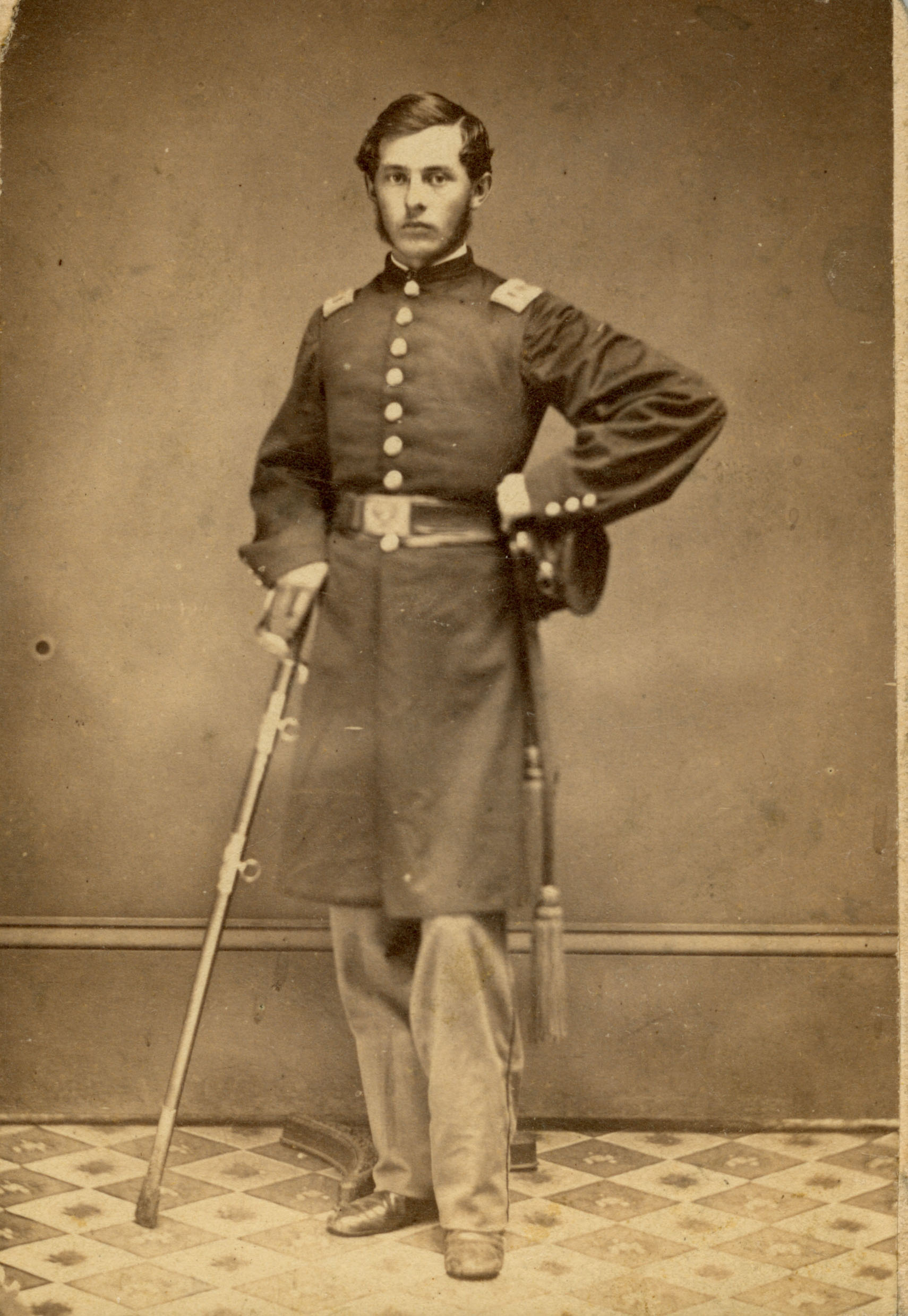
The Civil War was the single greatest conflict in America’s history and involved hundreds of thousands of soldiers in both the north and the south. More than 200,000 men served from the state of Indiana, and Indianapolis became a major staging center for the training and organization of troops. In 1862, the State Fairgrounds was transformed into a prison camp for Confederate soldiers, further involving Hoosier residents.
Governor Oliver P. Morton
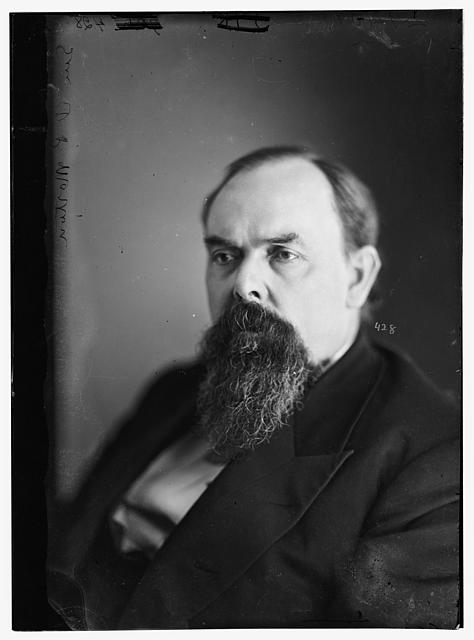
Indiana Governor Oliver P. Morton kept close tabs on every aspect of Indiana's participation in the war. He enjoyed enormous influence with national leaders such as President Abraham Lincoln and Secretary of War Edwin M. Stanton, as well as with military leaders in the field.
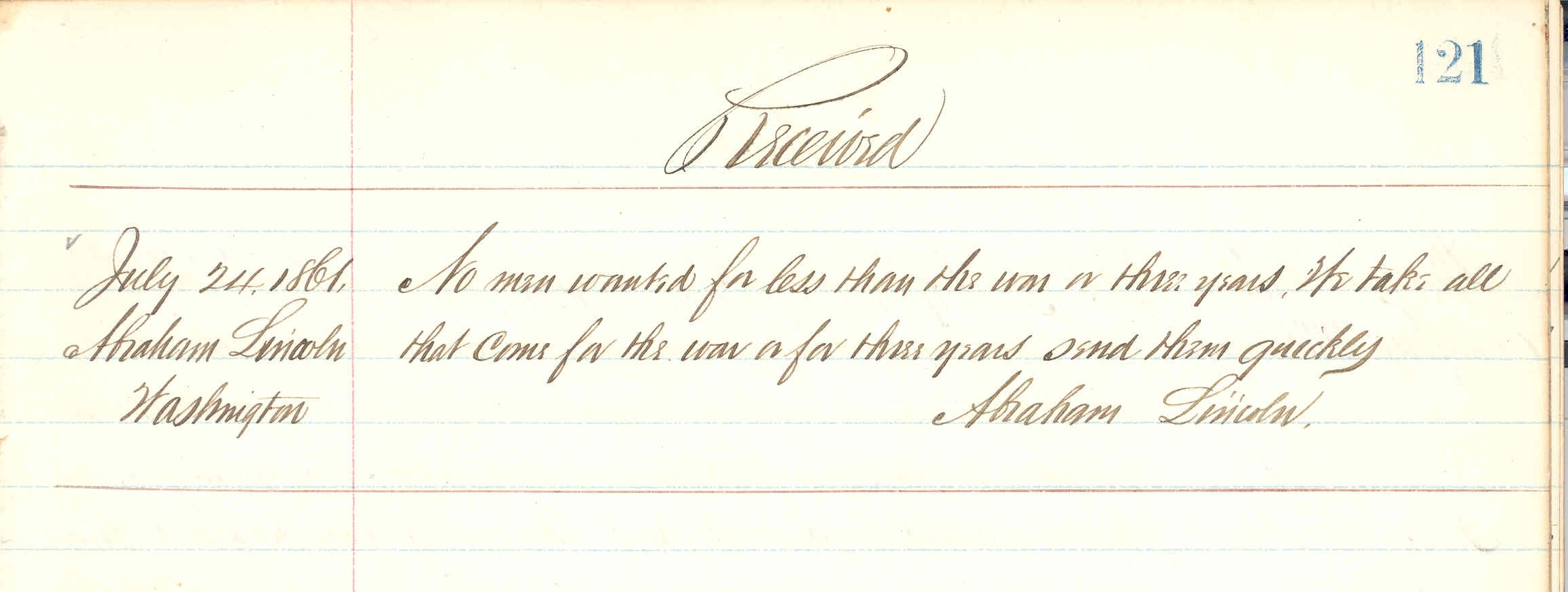
Extensive documentation of Morton's administration can be found in the Indiana State Archives. The Governor Morton Papers include thousands of letters to the Governor and his staff. Of singular importance for Civil War scholars are the seventeen volumes of telegraphic correspondence between Morton and Lincoln, Stanton, Grant, Sherman, and many others. The Governor and his staff kept in close contact with Indiana troops in the field, many of whom wired reports to him. The Morton Papers are available on microfilm. The telegraph books, along with thousands of individual telegrams received by the Governor’s Office, are available online as digital images free of charge through the Digital Collections of IUPUI University Library.
Adjutant General's Office
Records from the Adjutant General of Indiana provide a wealth of information on Indiana's role in the Civil War. Individual regimental correspondence is available for order on microfilm.
Muster Rolls
Shortly after the turn of the century, the Adjutant General’s office hired several clerks to index the deteriorating original muster rolls, in an effort to more readily locate the records of soldiers who had served with Indiana regiments. The soldiers needed confirmation of their service to apply for military pensions. Nearly a century later, archivists still use this index. The cards have been microfilmed and are available for copying. The cards may contain information about the individual’s service, including regiment and company, and in many instances the soldier’s age and physical description, former occupation, nativity and notes including promotions, medical conditions, and dates of death if during service. Volunteers have entered a portion of the information from the cards into a searchable database, but patrons may still request a copy of the index card from the Archives.
Hospital Records
During the war, the Adjutant General of Indiana documented the efforts of the Indiana Military Agency/Indiana Sanitary Commission to provide medical care for Indiana troops in the field. Among these records are the hospital registers for individual regiments and for army general hospitals. The registers are not indexed, but are typically arranged by regiment and date.
Quartermaster Records
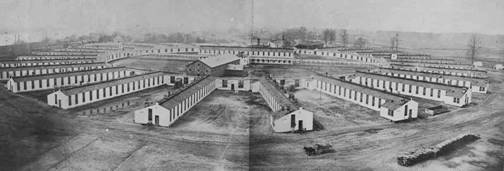
Records of the Quartermaster General of Indiana include details on the issuance of camp supplies and ordnance to the volunteer and militia troops. Ordnance records unfortunately do not record the serial numbers of specific weapons nor to whom they were assigned.
The Indiana Legion
The records of the Indiana Legion, the state militia or “Home Guard” during the Civil War, include muster rolls and correspondence for units in most counties. They contain many details about the effects of the war on the home front, as well as the significant role played by the Legion.
1862 Draft Records
Enrollment records of the 1862 state-administered draft are available on microfilm. Draft records provide detailed information on all white males 18 to 45 years of age in each township, by county, in the state. At the end of each township is a separate list of volunteers already enrolled in service and the name or number of the individual’s unit.
Enrollment of Soldiers, Widows, and Orphans
The primary resource for Indiana Civil War veterans is the Enrollment of Soldiers, Widows and Orphans, three statewide registrations of veterans and their survivors taken in 1886, 1890 and 1894. Each enrollment lists alphabetically the name of the veteran, the unit he served in, the war he fought in (Mexican or Civil), the number of children under 16, and any wounds and illness contracted in service. There is an alphabetical card index to the 1886 enrollment available at the State Library, but the records can be searched at the State Archives by county and township.
Indiana Veterans' Home
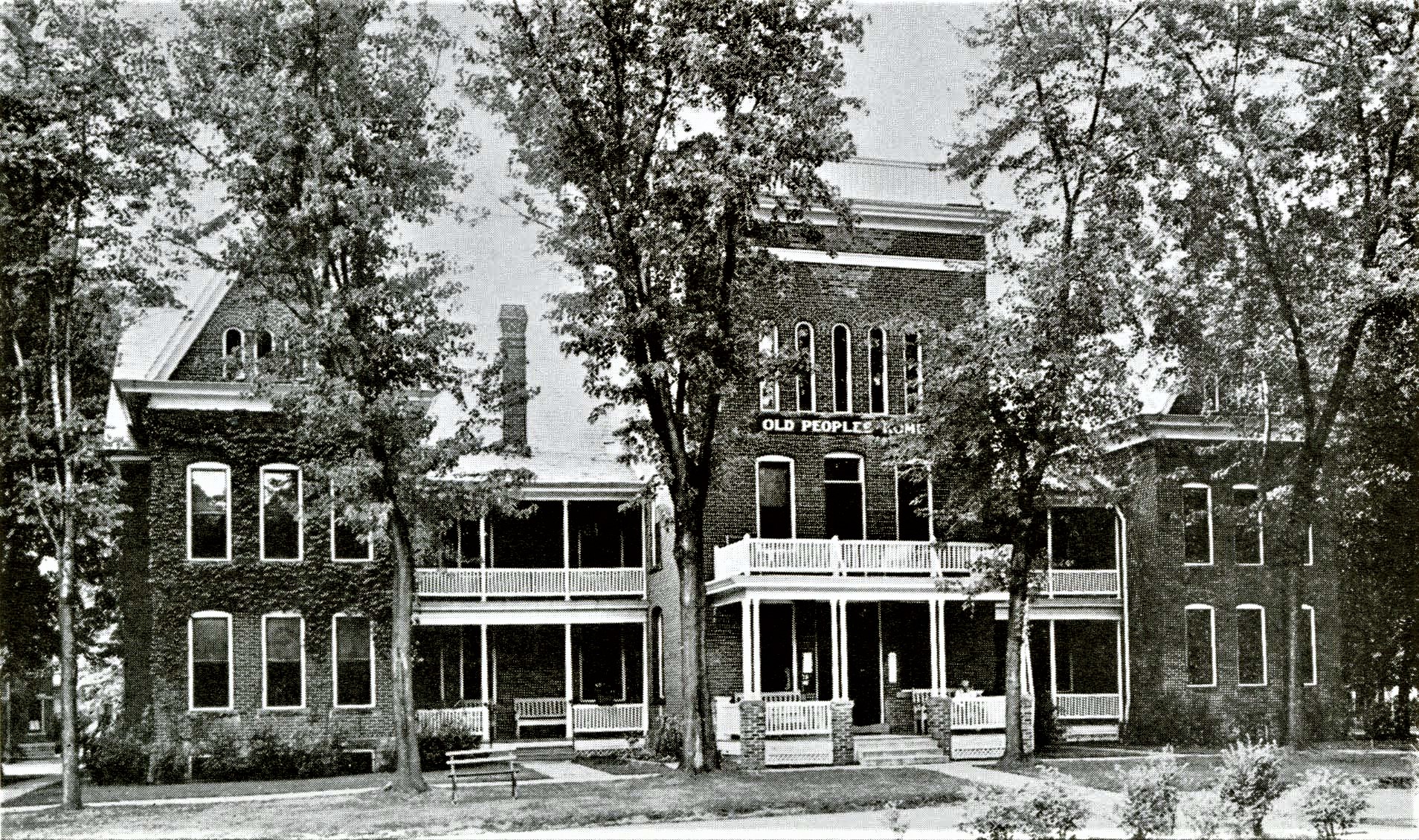
The Indiana State Soldiers’ Home opened in 1896 in Lafayette. Today it is known as the Indiana Veterans’ Home. The State Archives hosts more than 10,000 files of the men and women who resided there. The Home cared for honorably discharged veterans and their wives or widows. The members’ packets include applications for admission, family information, and often information regarding the death of the soldier. Records dating from 1896 to 1964 have been indexed on the Indiana Digital Archives, though the Archives holds records for veterans up to the present.
Camp Morton
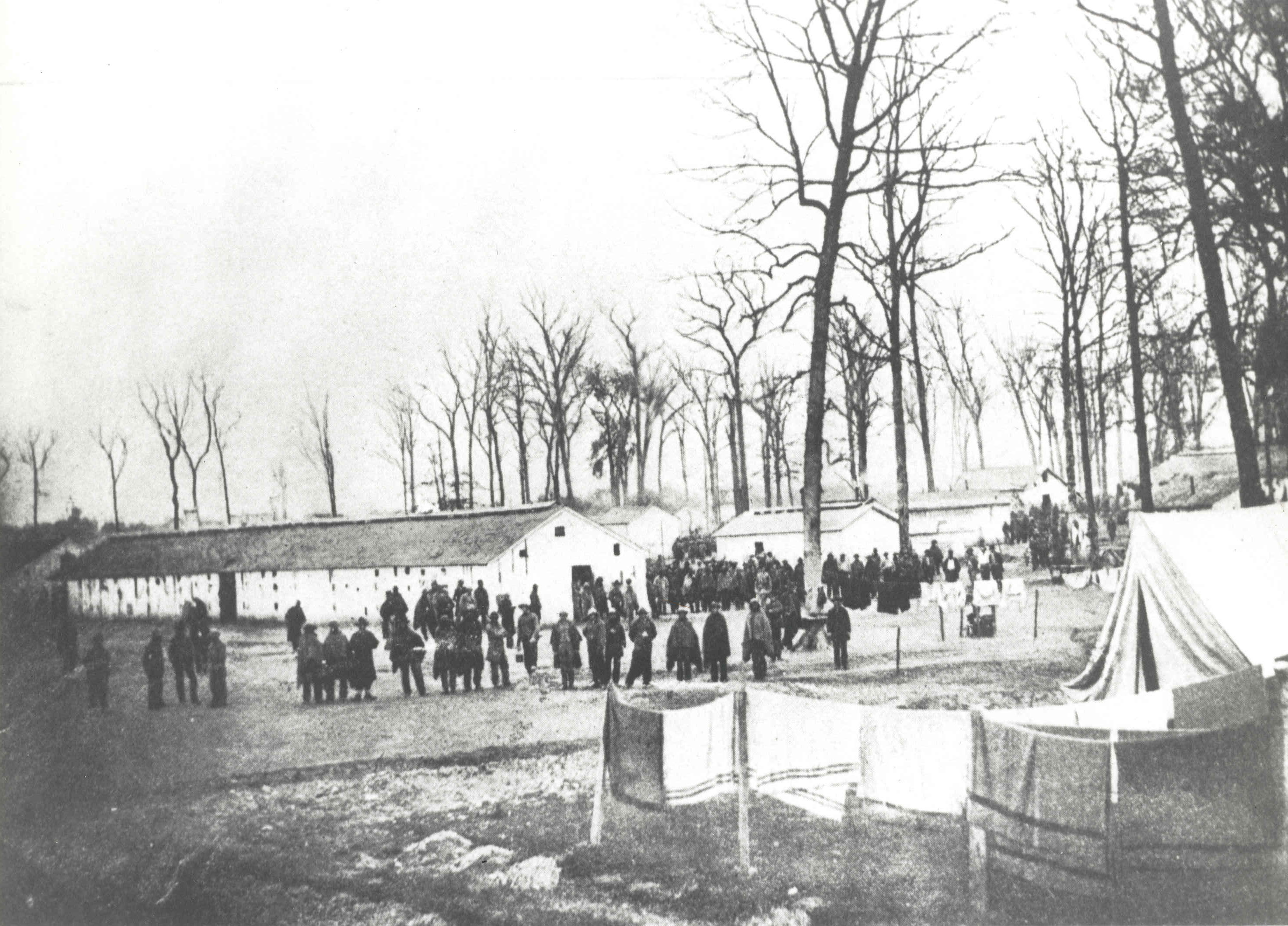
Camp Morton, the Civil War Prison for captured Confederate soldiers, enjoyed a better reputation than it deserved. During the early part of the war in 1862, Richard Owen, son of New Harmony founder Robert Owen, would earn a commendable standing for the Indianapolis prison. Owen only remained in charge for a few months. A series of new commandants would begin to tarnish that standing. A small collection of letters written by prisoners to Governor Morton asking for release are available in the State Archives. Additional microfilm from the National Archives is available for use in the Reading Room.
Morgan's Raid
A list of claims made against the state for damages incurred during Confederate General John H. Morgan's 1863 raid into Indiana is available on microfilm. Listed county by county, the name of each claimant and the type and value of goods lost are given.
Regimental Correspondence
The Indiana State Archives holds correspondence for many Indiana Volunteer Infantry troops, Cavalry, and Artillery units. Please see an index to the microfilm rolls here.
Pension Files
The Indiana State Archives does not hold information concerning pension files for Mexican or Civil War Veterans. The Indiana State Library does have the Index to the Pension Files available on microfilm in their Genealogy Division. Pension Files and other military records can be ordered through the National Archives online. Fold3 has digitized the Widows' Pension Files, but a paid subscription is required.
1939 WPA Veterans' Grave Registration
Other sources of information about veterans are the 1939 WPA Veterans' Graves Registration and the records of the Indiana Department of the Grand Army of the Republic (GAR). Many of the county grave registrations have been indexed on the Indiana Digital Archives, and many more will be added upon the move to the Research Indiana Indexes.
Indiana Soldiers' and Sailors' Children's Home
The Indiana Soldiers’ and Sailors’ Children’s Home has operated in Knightstown, Indiana, since the Civil War to care for the children and grandchildren of veterans. Veterans’ children from all subsequent wars have been eligible for admission, until the Home’s closure in 2009. Genealogists will appreciate the family information included in the admission and discharge books and early applications for admissions, or the later admission and discharge cards. The admission records up to 1995 have been indexed on the Indiana Digital Archives. More information about the Home and its records can be found at the Soldiers’ and Sailors’ Children’s Home page.
National Guard to 1940
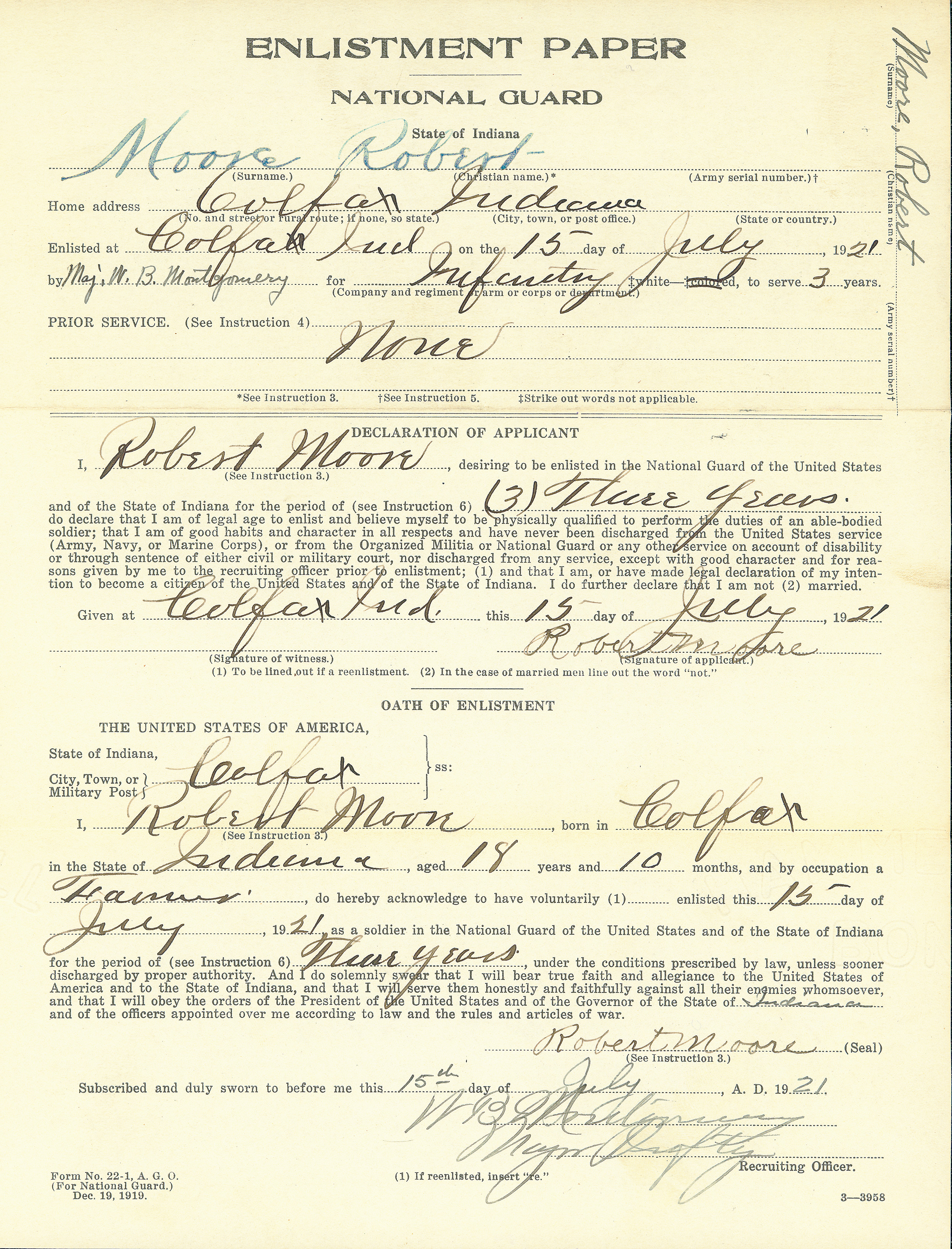
The Indiana State Archives houses information about those who served in the National Guard until 1940. Friends of the Archives volunteers recently completed a longterm project, which involved unfolding, flattening, and placing in acid free folders the enlistment papers and cards of soldiers who entered service between 1898-1940. The index to these records is now available on the Indiana Digital Archives.
The Indiana National Guard traces its roots back to 1801 in the early days of the Indiana Territory. For more information on those 19th century soldiers be sure to visit our Early Military and Civil War pages.
For records after 1940, please contact the Indiana Adjutant General’s Office at 317-247-3300. Also visit the Indiana National Guard's home page for more information.
World War I
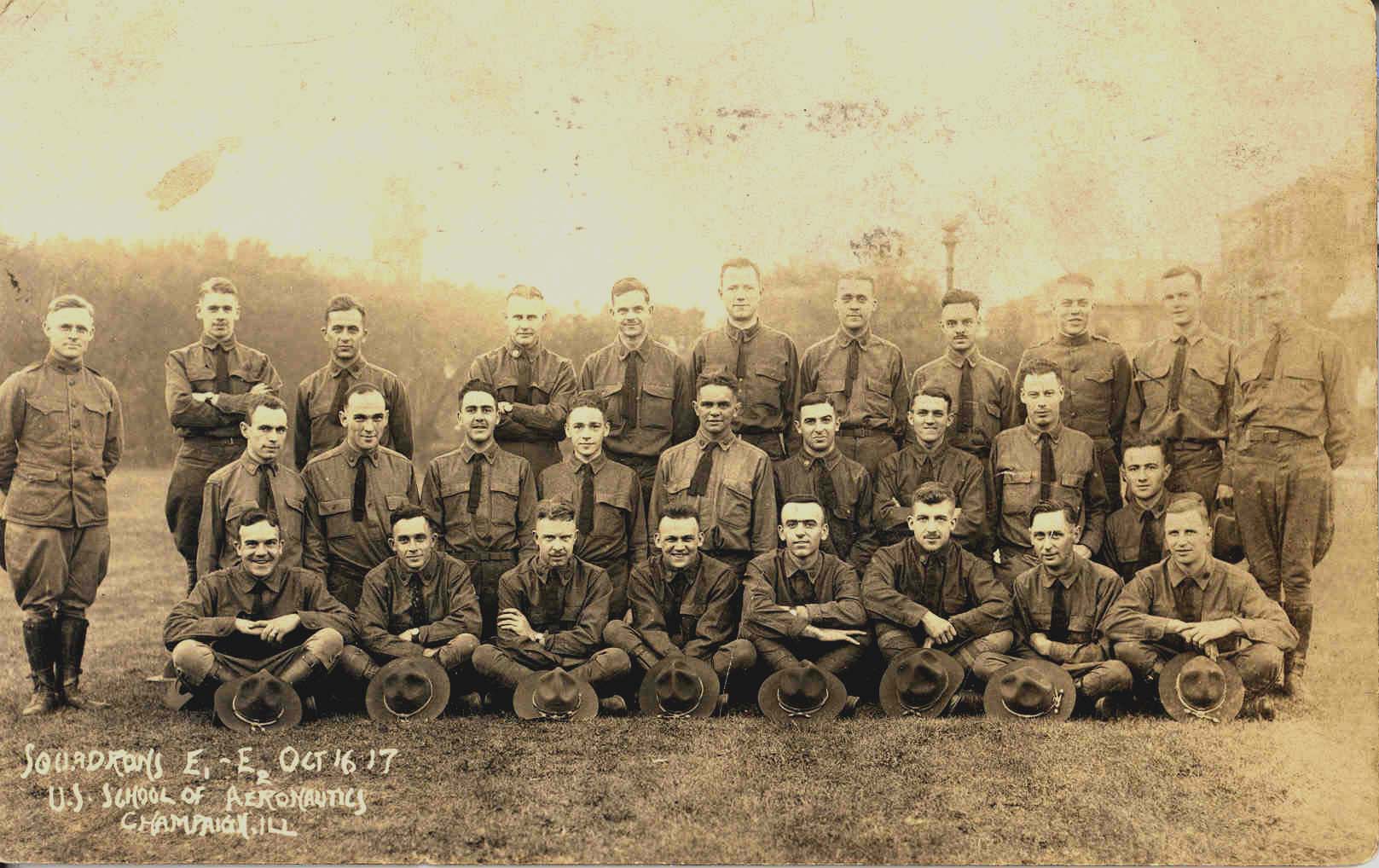
Service Records
The Indiana State Archives has service record cards and draft registration cards available on microfilm. These cards generally offer dates of service, areas of deployment, and awards and citations. The service card have been digitized and are currently being indexed on FromThePage by virtual volunteers working from home. Visit the site to search the cards already indexed or sign up to help finish the collection.
Gold Star Honor Roll
The Gold Star Honor Roll includes the records of soldiers who died during World War I. The entries include biographical and service information. The original material was collected by the Indiana Historical Commission between 1919 and 1921 and the resulting sixty-five bound volumes were eventually transferred to the Indiana State Archives. The information has been indexed and copies, including photographs, are available at the Indiana State Archives. Please contact Archives staff at arc@iara.in.gov.
Book of Merit
The Book of Merit Awards and Citations Collection was created by the Indiana Historical Bureau in the late 1920s as a means of gathering the necessary information to publish the Indiana Book of Merit, honoring the distinguished service of Hoosier soldiers in World War I. The title was taken from an idea first suggested by George Washington on August 7, 1782 when he established the first American decoration and provided for inscribing a record of the awards in a “Book of Merit.” Records were compiled from numerous sources of the Armed Services, by examining service cards transmitted to the State Adjutant General and through extensive verification processes with allied nations for foreign awards. Included are records for eighteen women serving typically as nurses or with the Red Cross. The database is searchable and copies, including photographs, can be obtained by contacting Archives staff at arc@iara.in.gov.
Modern Military Records
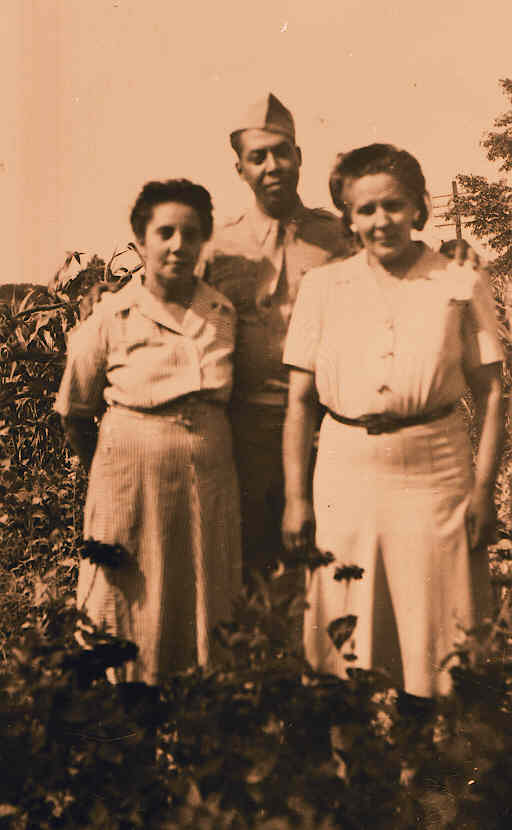
Urgent Requests
The State Archives receives daily requests for discharge papers (DD214’s) from veterans and their family members. This record of service is an invaluable document for former military personnel as it can be used for proof of service when applying for a Veteran’s Administration Home Owners’ Loan or to receive medical benefits. The discharge is often requested by funeral directors and family members in order to receive veterans’ burial benefits, including headstones and a flag for the funeral service.
If you are requesting a DD214 (WWII through 1988) for emergency medical reasons or for the purpose of funeral arrangements for a Hoosier veteran, please contact the State Archives directly at 317-591-5222. Please note that unless a WWI discharge is needed for a surviving spouse these requests are not typically considered an emergency.
If yours is not an urgent request, please send an email or letter with the veteran’s name, birth date, and possible dates of service, or visit the Archives’ Reading Room. You will need the written permission of the veteran to receive copies of these records, with the exception of those who served during WWI or earlier. Veterans will need to bring or send a copy of a photo identification.
This page contains a list of DD214 collections in the possession of the State Archives. If you or your veteran was not discharged from service during these time periods, alternative resources include the County Recorder’s Office where the veteran lived, and the National Personnel Records Center in Saint Louis. (314-801-0800)
World War II
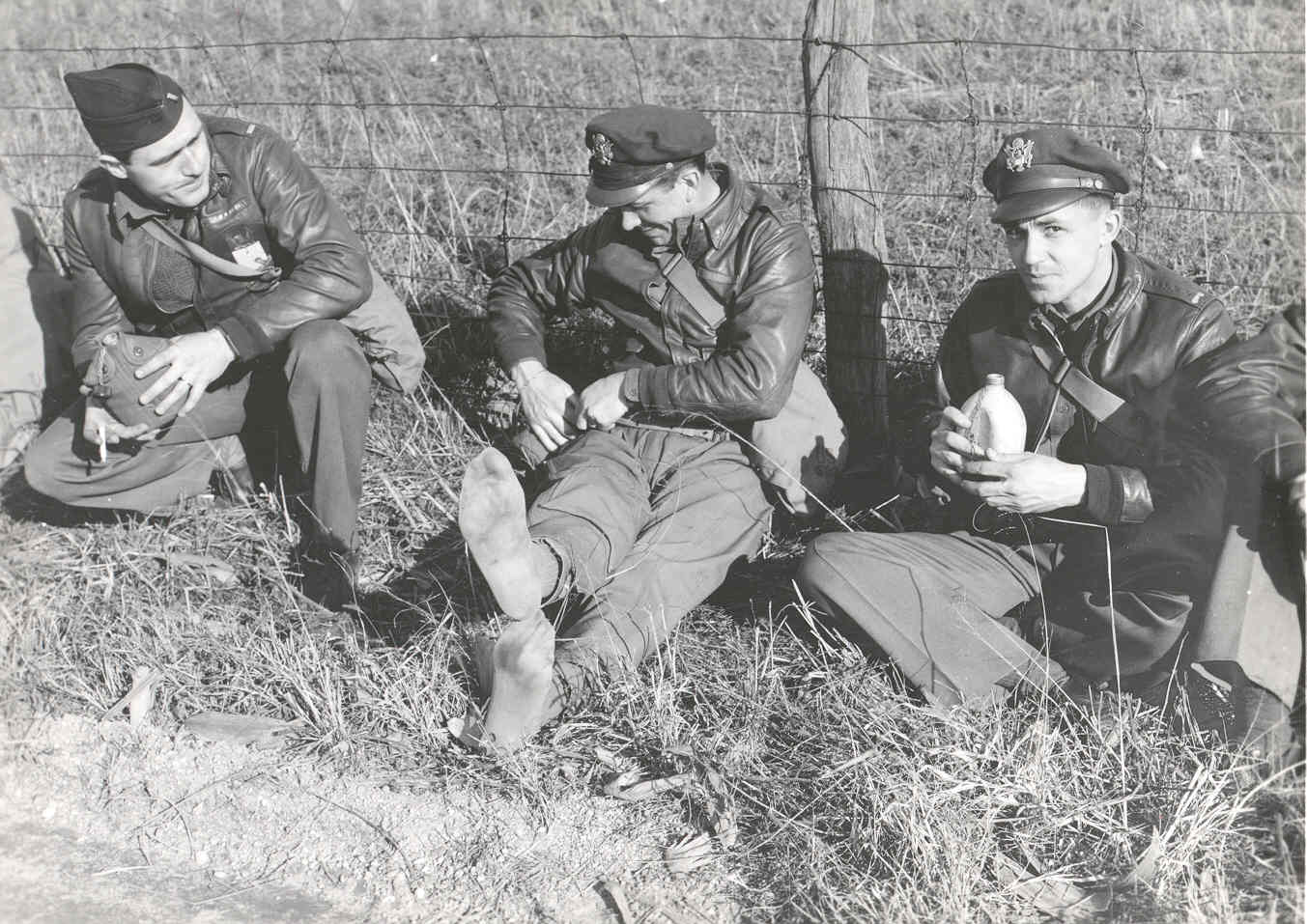
Discharge Certificates
If a veteran served and was discharged during World War II, he or she was eligible to apply for a bonus from the State of Indiana after the war. Part of the bonus application procedure required a copy of the veteran’s DD214, which was retained by the Indiana Adjutant General’s Office and eventually transferred to the State Archives. If an application for the State Bonus was not made after the war, the State Archives will not have a copy of the discharge.
U.S. Army and Navy Casualties, 1941-1945
An alphabetical card file of Indiana Army and Navy casualties is also available. The information includes rank, name, next of kin, date, and theater of military action. There is a separate index for Marion County residents.
Korean War
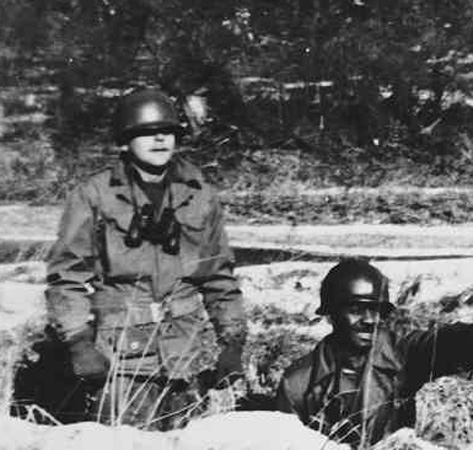
Veterans who served on active duty in the country of Korea in the early 1950’s were eligible for a State Bonus. Copies of separation papers and the Indiana Bonus applications are available if the veteran applied. Please note that veteran's serving in other zones, most likely did not apply for the Korean War Bonus and therefore we would not have their records. Please check with the County Recorder's Office or the National Personnel Records Center in Saint Louis. (314-801-0800)
The Archives also has volumes, arranged by counties, for veterans, which include an address and serial number. One must know the county where the soldier lived.
Additional information is available for those who died in action in Korea.
Vietnam War
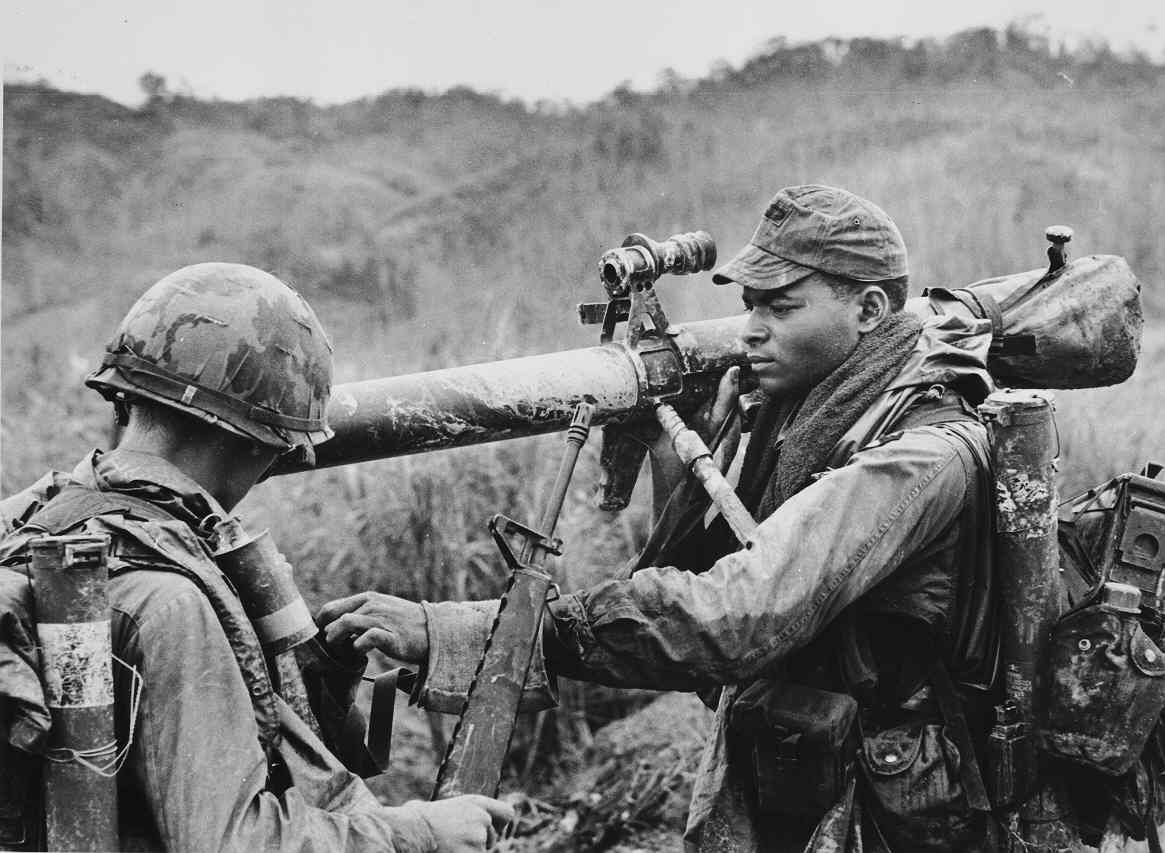
A very limited number of DD214’s are available for those veterans who served in Vietnam, and who applied for a bonus through the state of Indiana after the war. The bonus was limited to those who served in the countries of North and South Vietnam. If the veteran served elsewhere, he or she most likely did not apply for the bonus. Please check with the County Recorder's Office or the National Personnel Records Center in Saint Louis. (314-801-0800)
DD214’s 1979-1984, 1985-1987, and 1988
If you specified that a copy of your DD214 should be sent to your home state of Indiana upon your discharge, it is possible that the State Archives will have a copy of your record. Please contact us to request a search. Discharge papers for 1988 are filed using the last two digits of the veteran's Social Security Number. All other collections are filed alphabetically, and a birth date will be used to narrow the choice if more than one veteran served using the same name.
DD-214's After 1988
For records of discharge after 1988, please contact the Indiana Department of Veterans’ Affairs at 317-232-3910.
